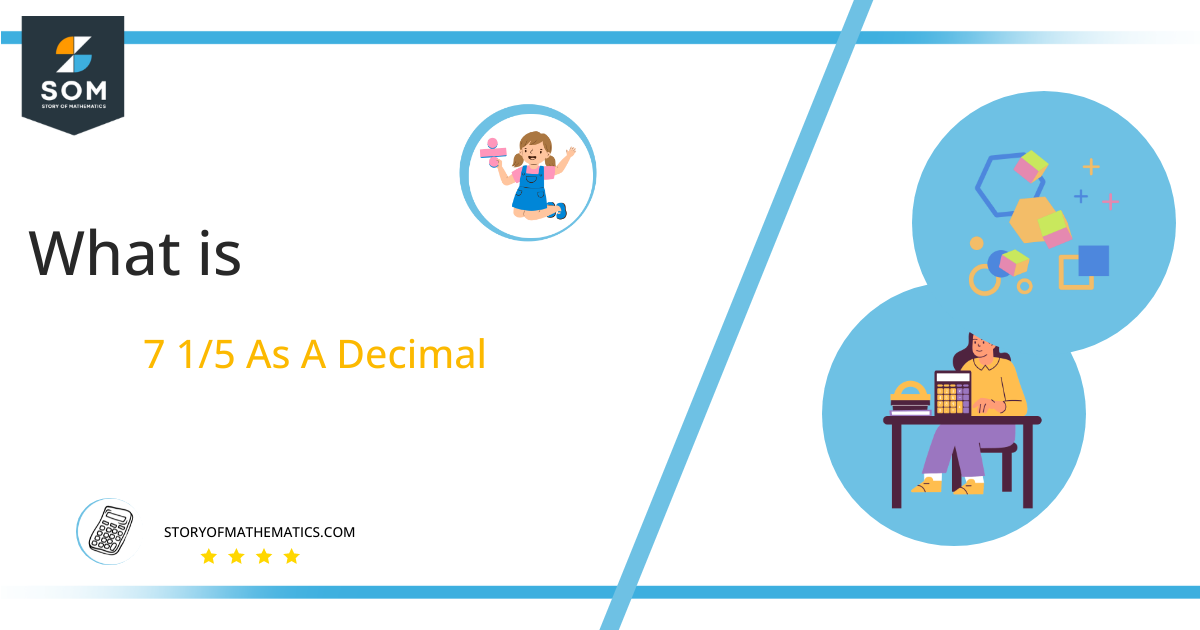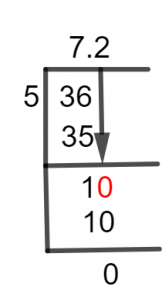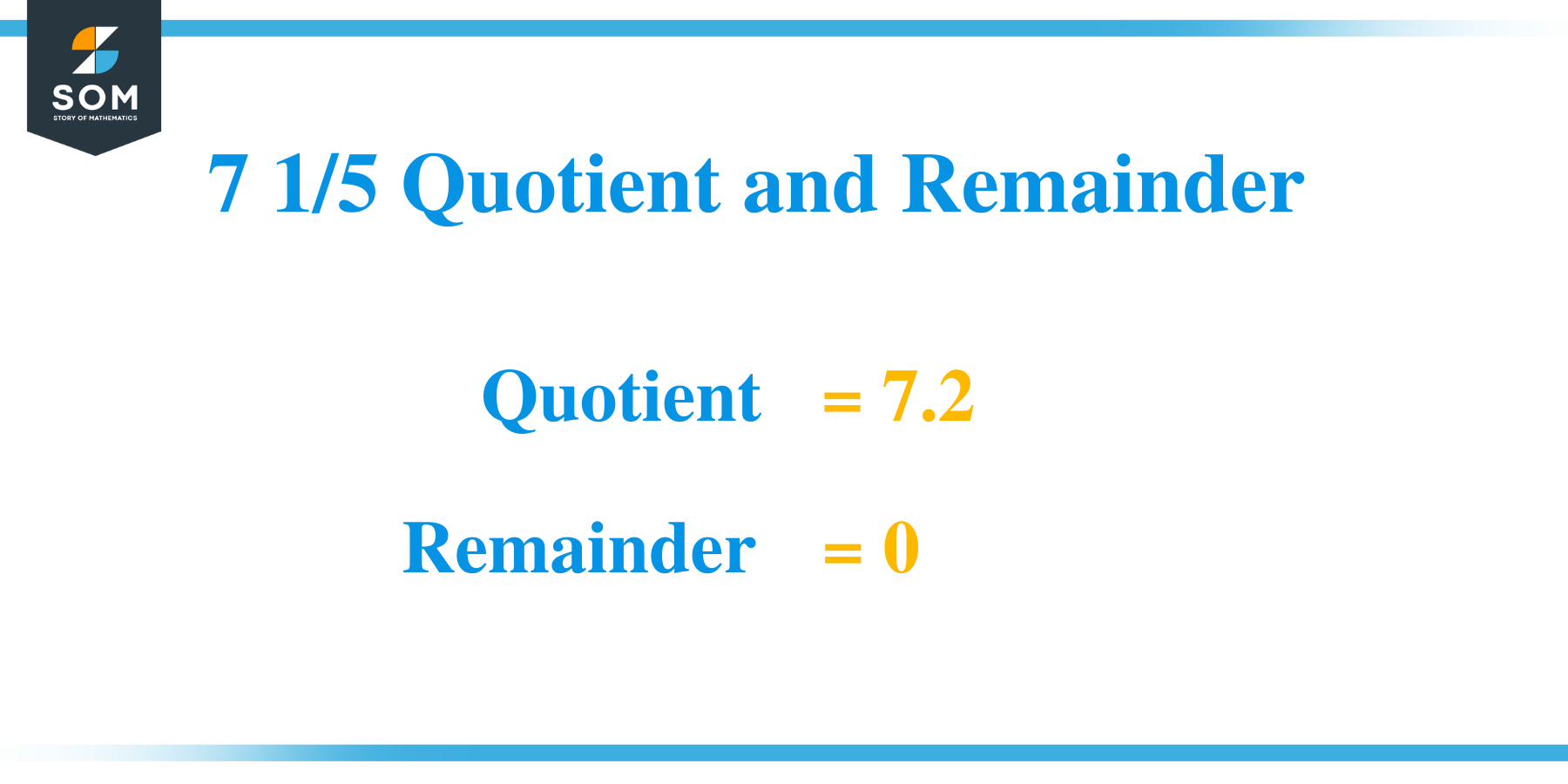What Is 7 1/5 as a Decimal + Solution With Free Steps

The fraction 7 1/5 as a decimal is equal to 7.2.
A Fraction is constructed when we express two numbers as a ratio. After division, these values provide the fraction’s decimal value. Proper, improper, and mixed fractions are among the main types of fractions. In contrast to proper and improper fractions, mixed fractions appear to be unique and challenging, yet they can be solved when applying appropriate mathematical techniques.
Long division is one of the most common and efficient ways to solve a fraction, which is explained in detail here.
Solution
A Mixed Fraction, a modified form of an improper fraction, includes details about the remainder and quotient of the fraction. Therefore, in the process of converting a mixed fraction to a decimal, it must first be converted into the appropriate improper fraction.
After multiplying the denominator and the whole number, the result is added to the numerator to determine the improper fraction’s numerator. For instance, the mixed fraction of 7 1/5, after converting into an improper fraction, has a numerator of 36. However, its denominator is also 5. So, 7 1/5 can also be written as an improper fraction of 36/5. Where:
Dividend = 36
Divisor = 5
Generally, two numbers or elements of the fraction are divided to produce the decimal value of the fraction, and the name given to this decimal value is Quotient.
Quotient = Dividend $\div$ Divisor = 36 $\div$ 5
We can’t always divide the two numbers evenly during the division operation. In such cases, we also receive a value called the Remainder in addition to the quotient.
The complete process to determine the decimal value of 7 1/5 is explained below in detail.

Figure 1
7 1/5 Long Division Method
The improper form of 7 1/5 is:
36 $\div$ 5
The fundamental division method is quite simple. In this procedure, the nearest multiple of the divisor to the dividend is identified and deducted from the dividend. The resulting number is referred to as the remainder, which is taken as the dividend for the subsequent division steps.
36 $\div$ 5 \approx 7
5 x 7 = 35
We find that some remainder is generated, given as:
36 – 35 =1
Now, we have to consider 1 as a dividend, but it is less than 5, the divisor of this division. Thus, we know that inserting a Decimal Point in the Quotient becomes necessary. This can be achieved by changing 1 to 10.
Thus, now we have to divide 10 by 5.
10 $\div 5$ = 2
5 x 2 = 10
Since 10-10=0 indicates no remainder. So by combining the results of all the division steps, we determine all final results of 7 1/5 or 36/5 to be 7.2 without any remaining value. We also conclude that it is a Terminating Fraction.

Images/mathematical drawings are created with GeoGebra.
